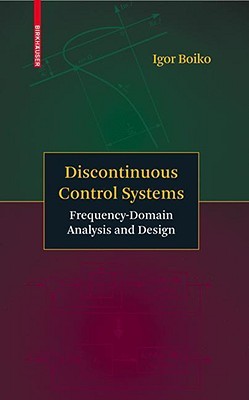
- We will send in 10–14 business days.
- Author: Igor Boiko
- Publisher: Birkhäuser
- ISBN-10: 081764752X
- ISBN-13: 9780817647520
- Format: 16 x 23.9 x 1.5 cm, kieti viršeliai
- Language: English
- SAVE -10% with code: EXTRA
Reviews
Description
Discontinuous control systems are the oldest type of control system and the mostwidespreadtypeofnonlinearcontrolsystem. Thetheoryofdiscontinuous control, and the theory of relay feedback systems in particular, is usually c- sidered a mature subject. However, many problems in discontinuous control theory still remain open. One problem involves the input-output properties of these systems, knowledge of which is extremely important to every app- cation. Two types of discontinuous control systems are studied in this book. The ?rst is the so-called relay feedback system, which normally encompasses - lay servomechanisms, various on-o? controllers, sigma-delta modulators, relay feedback tests used for process dynamics identi?cation, and controller tuning. Relaysystemsareoftenconsideredthemaintypeofnonlinearsystem, whichis evident by the enormous amount of house temperature control systems (that are usually implemented as on-o? controllers) that exist. The theory of relay systems is an old subject. The problem of analysis of relay feedback systems was ?rst considered by L. MacColl in 1945 [71]; the study was motivated by thedevelopmentofrelayservomechanismsofmissilethrustersontheonehand and vibrational voltage regulators on the other. MacColl's analysis was based on an approximate approach close to the describing function method. Later, exact methods of analysis of relay feedback systems were developed, the most well-known of which is the Tsypkin locus [94]. The exact approach developed by Tsypkin, however, did not consider the servo aspect of relay feedback c- trol. Its purpose was limited to ?nding periodic motions that may occur in a relay system in an autonomous mode or under external excitation.
EXTRA 10 % discount with code: EXTRA
The promotion ends in 22d.02:31:42
The discount code is valid when purchasing from 10 €. Discounts do not stack.
- Author: Igor Boiko
- Publisher: Birkhäuser
- ISBN-10: 081764752X
- ISBN-13: 9780817647520
- Format: 16 x 23.9 x 1.5 cm, kieti viršeliai
- Language: English English
Discontinuous control systems are the oldest type of control system and the mostwidespreadtypeofnonlinearcontrolsystem. Thetheoryofdiscontinuous control, and the theory of relay feedback systems in particular, is usually c- sidered a mature subject. However, many problems in discontinuous control theory still remain open. One problem involves the input-output properties of these systems, knowledge of which is extremely important to every app- cation. Two types of discontinuous control systems are studied in this book. The ?rst is the so-called relay feedback system, which normally encompasses - lay servomechanisms, various on-o? controllers, sigma-delta modulators, relay feedback tests used for process dynamics identi?cation, and controller tuning. Relaysystemsareoftenconsideredthemaintypeofnonlinearsystem, whichis evident by the enormous amount of house temperature control systems (that are usually implemented as on-o? controllers) that exist. The theory of relay systems is an old subject. The problem of analysis of relay feedback systems was ?rst considered by L. MacColl in 1945 [71]; the study was motivated by thedevelopmentofrelayservomechanismsofmissilethrustersontheonehand and vibrational voltage regulators on the other. MacColl's analysis was based on an approximate approach close to the describing function method. Later, exact methods of analysis of relay feedback systems were developed, the most well-known of which is the Tsypkin locus [94]. The exact approach developed by Tsypkin, however, did not consider the servo aspect of relay feedback c- trol. Its purpose was limited to ?nding periodic motions that may occur in a relay system in an autonomous mode or under external excitation.


Reviews